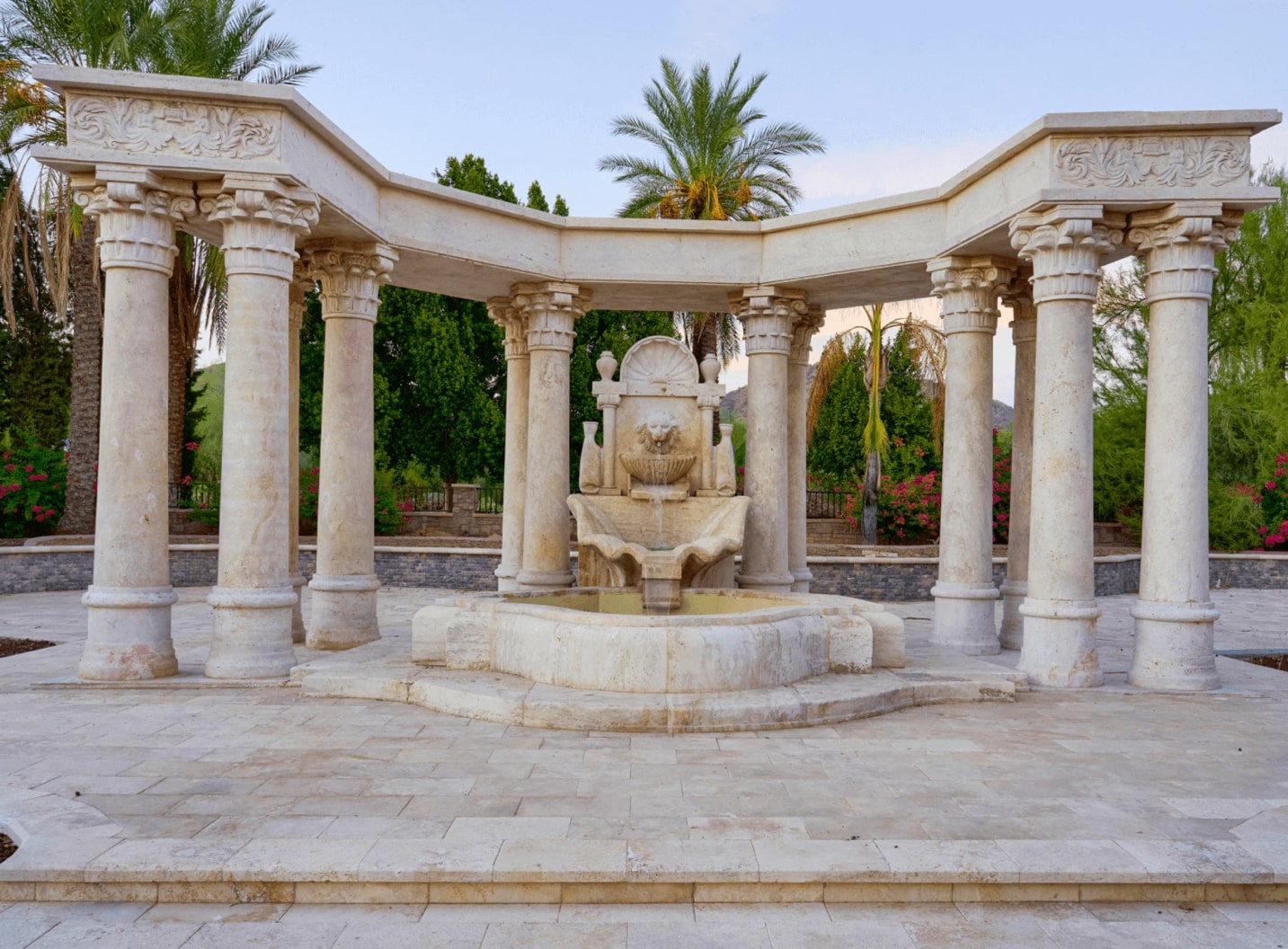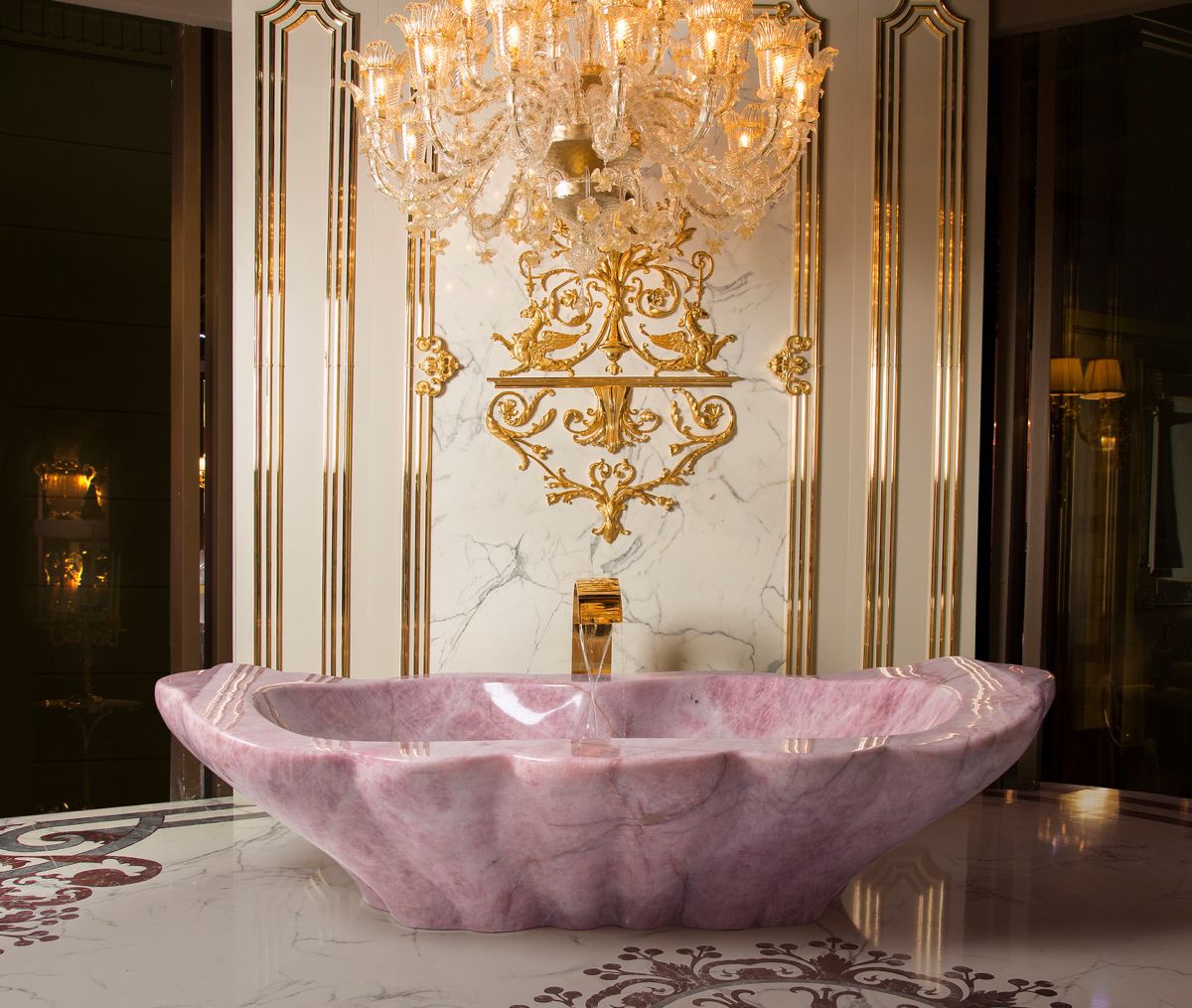Marble Statue: The Significance and Power of Tiger Marble Statues for Strength and Protection
Marble statues have held significant cultural and historical importance in various civilizations throughout the ages. Among them, the tiger marble statue stands out for its association with strength and protection. These exquisitely crafted works of art have not only served as decorative pieces but also held deeper symbolic meanings. In this article, we will explore the historical significance of marble statues, delve into the craftsmanship of tiger marble statues, investigate their relevance in ancient cultures, and shed light on their modern-day applications.
Historical Significance of Marble Statues and Their Symbolism of Strength and Protection
The symbolism of the tiger has a profound historical significance in various powerful countries and nations. Throughout history, the tiger has been associated with strength, courage, and protection, making it a potent symbol in cultures around the world. Let's explore how this majestic creature has been revered in the context of several powerful civilizations:
-
China: In Chinese culture, the tiger holds a special place as one of the Four Symbols, which represent cardinal directions and seasons. The White Tiger, also known as Baihu, is associated with the west and symbolizes autumn. Often depicted as a fierce and powerful creature, the White Tiger is believed to protect against evil spirits and bring good fortune. In ancient China, the image of the tiger was frequently used on flags and banners to inspire soldiers and signify strength during battles.
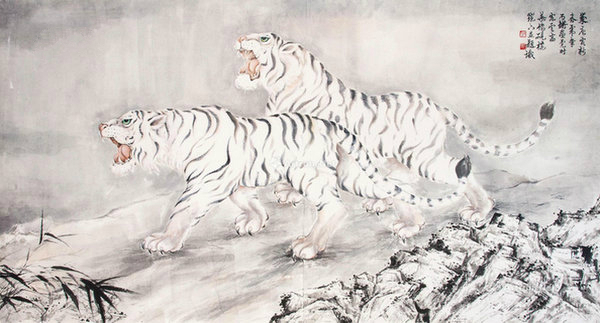
-
India: In India, the tiger has long been a symbol of strength and regal power. Indian folklore and mythology are replete with tales of valorous tigers, portraying them as protectors and embodiments of bravery. The Hindu goddess Durga is often depicted riding a tiger, known as her vahana (vehicle). This representation emphasizes her ferocity in protecting the righteous and upholding dharma (righteousness).

-
Korea: Korean culture also holds the tiger in high esteem. The tiger is one of the Twelve Guardians, a group of animals that represent the twelve directions in the traditional Korean zodiac. It is associated with protection and is believed to ward off evil spirits. Korean folk paintings often feature tigers as majestic and powerful beings, symbolizing courage and the indomitable spirit of the nation.
-
Russia: In Russia, the Siberian tiger holds a significant cultural and historical importance. As one of the largest and most powerful big cats, the Siberian tiger has been a symbol of strength and resilience in Russian folklore. The image of a tiger is featured in various Russian emblems, military insignia, and artworks, signifying valor and courage.

-
Iran: In ancient Persian mythology, the tiger is associated with the deity Mithra, who represents light, truth, and strength. Mithra is often depicted slaying a bull while accompanied by a lion and a tiger. The tiger, in this context, represents the powerful and courageous forces that bring about victory over darkness and evil.
-
Turkey: The tiger has historical importance in Turkish culture, particularly in the form of the Anatolian tiger, an extinct subspecies. The Anatolian tiger was revered for its strength and might, and its image can still be found in ancient Turkish art and artifacts, symbolizing protection and valor.
-
Japan: In Japanese culture, the tiger is considered one of the Four Symbols and is associated with autumn. It is depicted alongside the dragon, phoenix, and tortoise. The tiger represents courage and is believed to have protective qualities. Samurai warriors often adopted tiger motifs on their armor and battle flags to invoke strength and bravery on the battlefield.
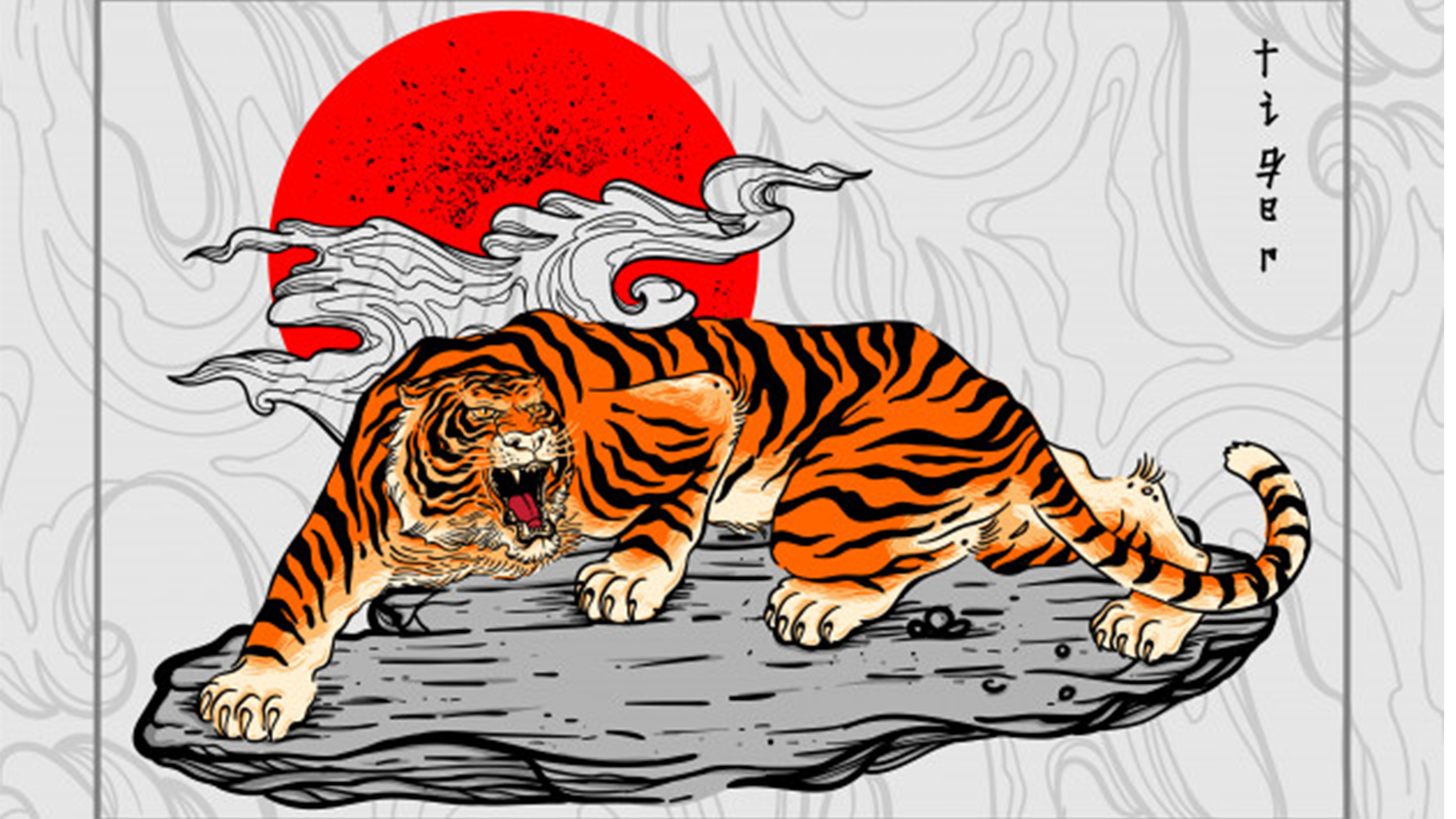
The symbolism of the tiger has transcended borders and time, resonating with powerful countries and nations throughout history. Revered for its strength, courage, and protective qualities, the tiger has been depicted in various cultural expressions, art forms, and mythologies, serving as a reminder of humanity's fascination with powerful and noble qualities. The connection between the tiger and these powerful civilizations underscores the enduring and universal appeal of this magnificent creature as a symbol of strength and protection.
Tiger marble statues, however, brought an additional layer of symbolism. For instance, in ancient China, tiger imagery was highly revered due to its association with strength, courage, and protection. The combination of the majestic tiger form with the elegance of marble made tiger marble statues particularly potent symbols of guardianship. These statues were often placed at the entrances of temples, homes, and important buildings to ward off evil spirits and protect the inhabitants.
Craftsmanship of Tiger Marble Statues and Their Expression of Strength and Protection
Creating tiger marble statues is a meticulous process that demands the utmost skill and artistry from sculptors. From selecting the right marble to capturing the essence of the tiger's strength and protection, every step contributes to the final masterpiece.
-
Marble Selection: The journey of crafting a tiger marble statue begins with the selection of the marble itself. Sculptors carefully consider various factors, such as the type, color, and veining of the marble, to enhance the intended design. White or light-colored marbles are often favored for their ability to highlight intricate details and create a sense of elegance and grace.
-
Study of Tiger Anatomy and Behavior: Before chiseling a single stroke, sculptors immerse themselves in the study of tigers. They explore the anatomy, muscle structure, and movement of the majestic creature to accurately depict its strength and power. A deep understanding of the tiger's behavior helps the sculptor imbue the statue with the essence of this formidable predator.
-
Sketching and Modeling: With a wealth of knowledge about tigers at their disposal, sculptors begin by sketching and creating small-scale models. These preliminary steps allow them to experiment with different poses and expressions to find the most compelling representation of strength and protection. Attention to even the smallest details, such as the position of the paws and the curve of the tail, is crucial in conveying the tiger's energy.
-
Carving Process: Once the final design is established, the real challenge begins. Skilled sculptors take up their chisels and mallets, ready to transform the raw marble into a work of art. The process is labor-intensive, requiring patience and precision. Sculptors must strike a delicate balance between removing excess material and preserving the natural beauty of the marble.
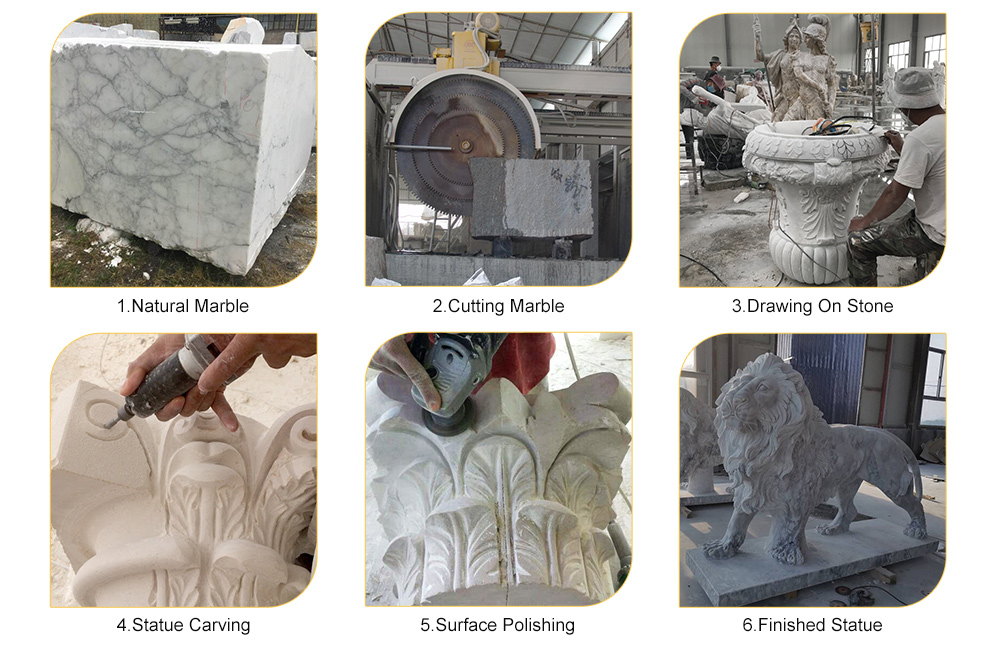
-
Expression and Emotion: The true artistry lies in the ability to infuse the statue with life and emotion. The fierce expression of the tiger's eyes, the tension in its muscles, and the power emanating from its stance all contribute to the statue's portrayal of strength and protection. Every stroke of the chisel is carefully measured to evoke a sense of awe and reverence for this magnificent creature.
-
Polishing and Finishing: As the form of the tiger emerges from the marble, sculptors meticulously smooth the surface and polish it to a radiant sheen. This process not only enhances the statue's appearance but also adds to the tactile experience, inviting viewers to connect with the artwork on a deeper level.
-
Symbolism and Meaning: Beyond the physical craftsmanship, the tiger marble statue holds profound symbolism. The fusion of the tiger's strength with the elegance of marble elevates the statue to a potent symbol of protection and power. The artwork becomes more than a mere representation of a creature; it becomes a conduit for the embodiment of these powerful qualities.
-
Legacy and Impact: Tiger marble statues have left a lasting legacy in various cultures. From ancient civilizations to modern art galleries, these statues continue to captivate and inspire viewers. Their enduring appeal as symbols of strength and protection speaks to the universality of these human desires, transcending time and borders.
Overall, the craftsmanship of tiger marble statues is an art form that demands skill, knowledge, and dedication. The process of selecting the right marble, studying the tiger's anatomy, and expertly chiseling the stone results in magnificent representations of strength and protection. Each tiger marble statue becomes a testament to the beauty of artistry and the timeless allure of these majestic creatures.
The Reverence of Tiger Marble Statues in Ancient Cultures and Their Mythical Connections
Tiger marble statues held significant religious and spiritual importance in various ancient cultures, where they were revered as symbols of strength, protection, and divine presence. Let's delve deeper into the mythical connections and applications of these statues in two prominent civilizations: China and India.
Chinese Mythology and the White Tiger
In ancient Chinese mythology, the tiger was one of the Four Symbols, also known as the Four Divine Creatures or Guardians of the Four Directions. Each of these mythical creatures represented a cardinal direction and a season. The White Tiger, associated with the west and autumn, was often depicted in the form of a tiger marble statue to safeguard against malevolent spirits and ensure harmony and balance in the natural world.
In the concept of Five Elements, which played a crucial role in Chinese cosmology and medicine, the tiger was linked to the element of Metal. The Metal element symbolizes strength, resilience, and protection, aligning perfectly with the tiger's inherent qualities. Tiger marble statues were placed in temples, palaces, and important landmarks to invoke the White Tiger's protective influence and bless the spaces with its auspicious energy.

Hindu Mythology and the Goddess Durga
In Hindu mythology, the goddess Durga holds a significant place as a symbol of feminine power, strength, and protection. She is often depicted riding a tiger or a lion, known as her vahana (vehicle). The combination of the tiger and marble in statues of Durga emphasized her fierce and protective aspects, making these sculptures objects of veneration during religious festivals, particularly during Durga Puja.
Durga Puja, a grand celebration observed in various parts of India, honors the victory of goddess Durga over the demon Mahishasura. Intricately crafted tiger marble statues of Durga are an essential part of the festivities. Devotees flock to temples and pandals (temporary structures) to witness the awe-inspiring depiction of the goddess astride a tiger, representing her readiness to protect the world from evil forces.

Applications in Rituals and Ceremonies
In both Chinese and Indian cultures, tiger marble statues were actively used in various religious rituals and ceremonies. Offerings were made to these statues as a gesture of respect and to seek protection and blessings from the divine presence they symbolized. During important events and festivals, the statues were adorned with garlands, vibrant fabrics, and fragrant incense as a sign of devotion and celebration.
Symbolism in Art and Architecture
Beyond their role in rituals, tiger marble statues also found their place in art and architecture. They adorned the exteriors and interiors of temples, palaces, and important monuments, serving as guardians and protectors of these sacred spaces. The statues were skillfully incorporated into the overall architectural design, reinforcing the symbolism of strength and protection in the structures they adorned.
Ethical Issues and Conservation
While tiger marble statues were revered for their symbolism and cultural significance, the real-world counterparts of tigers faced challenges in terms of conservation. As the demand for tiger marble statues grew, so did the demand for tiger body parts and skins, leading to poaching and illegal trade in various regions. The exploitation of tigers for decorative and medicinal purposes raised ethical concerns and highlighted the importance of conservation efforts to protect these majestic creatures in the wild.
Tiger marble statues, deeply rooted in ancient cultures, held profound mystical connections and served as symbols of strength and protection. From the White Tiger in Chinese mythology to the fierce depiction of goddess Durga in Hindu mythology, these statues invoked a sense of awe and reverence among devotees and art enthusiasts alike. They played a vital role in religious rituals, adorned important structures, and acted as guardians of sacred spaces. However, the symbolism of tiger marble statues also raised awareness about the need for ethical practices and conservation efforts to safeguard the real-world counterparts of these magnificent creatures.
Modern-day Applications and Beliefs Surrounding Tiger Marble Statues
In contemporary society, the appreciation for tiger marble statues continues. While some view them as exquisite pieces of art, others still imbue them with symbolic importance. Many believe that placing tiger marble statues in homes or workplaces can bring a sense of strength, courage, and protection to the surroundings.
For instance, a tiger marble statue placed in a business establishment might be seen as a symbol of protection against financial challenges and a representation of strength and leadership. In homes, these statues are believed to guard the household and its occupants, creating a sense of safety and well-being.
As expressions of cultural heritage, tiger marble statues hold a nostalgic connection to ancient traditions and beliefs. They serve as a reminder of the enduring human fascination with strength and protection, bridging the gap between ancient spiritual beliefs and modern-day aesthetics.
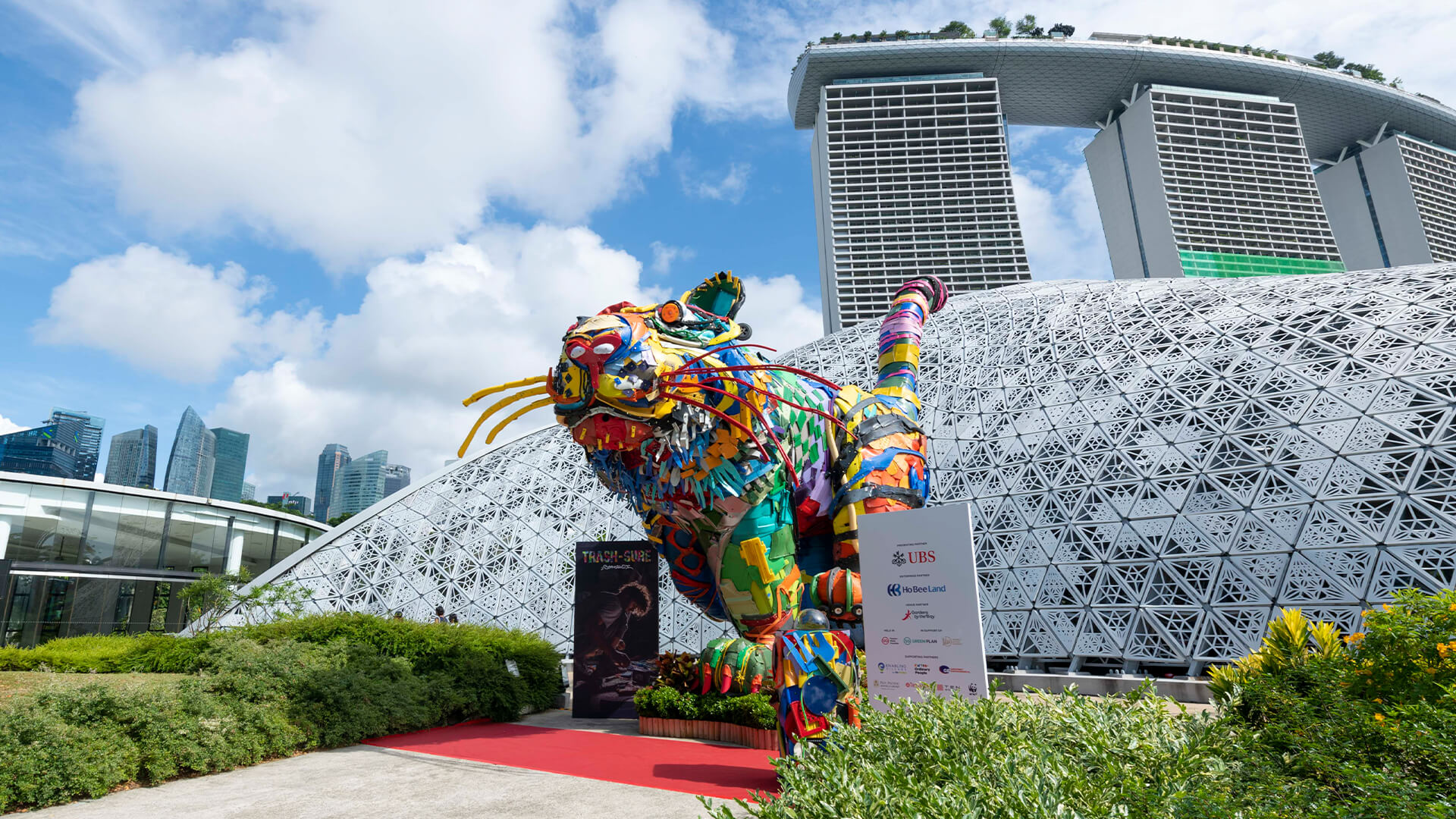
Conclusion
Marble statues, particularly the captivating tiger marble statues, have endured as potent symbols of strength and protection throughout the ages, transcending cultural boundaries and leaving a lasting impact on humanity. Their exquisite craftsmanship continues to mesmerize art enthusiasts and believers alike, carrying with them the timeless quest for safeguarding and fortitude. Whether gracing the halls of museums, adorning homes, or enhancing public spaces, these masterpieces serve as powerful reminders of the profound beauty of artistic expression.
For those seeking to embrace the allure of a customized and high-quality tiger marble statue for their homes or business establishments, Classybath Stone Tubs offers a splendid array of options. Their expertise in crafting stunning marble sculptures ensures that each piece embodies the essence of strength and protection, bringing the majestic presence of the tiger into your surroundings. Embrace the legacy of these magnificent statues and reach out to Classybath Stone Tubs to add a touch of enduring artistry and symbolism to your space.
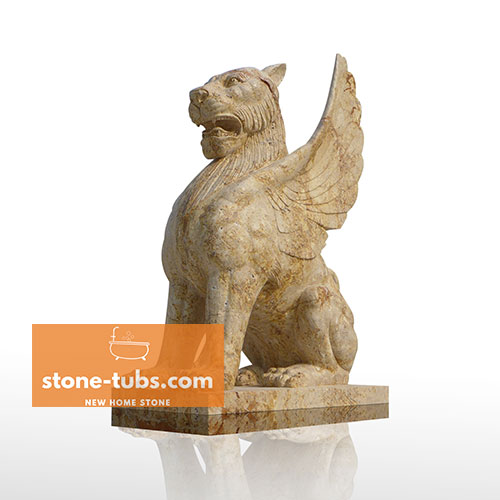
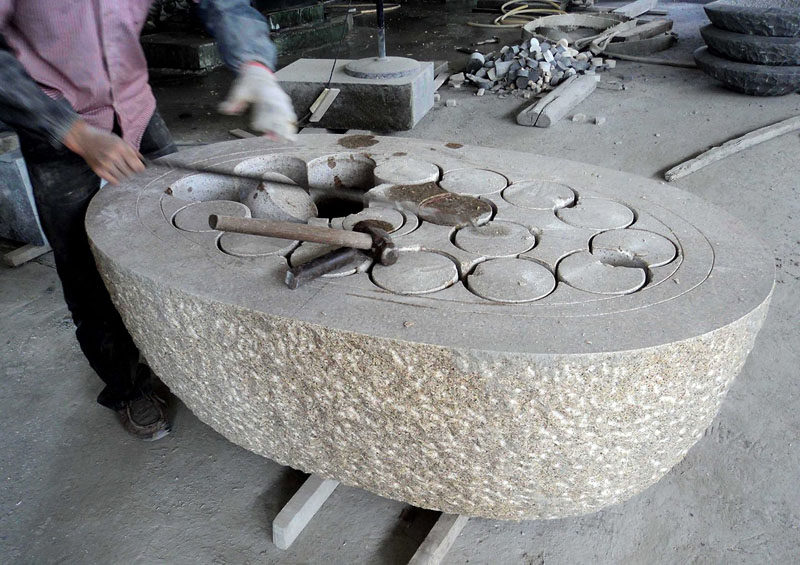
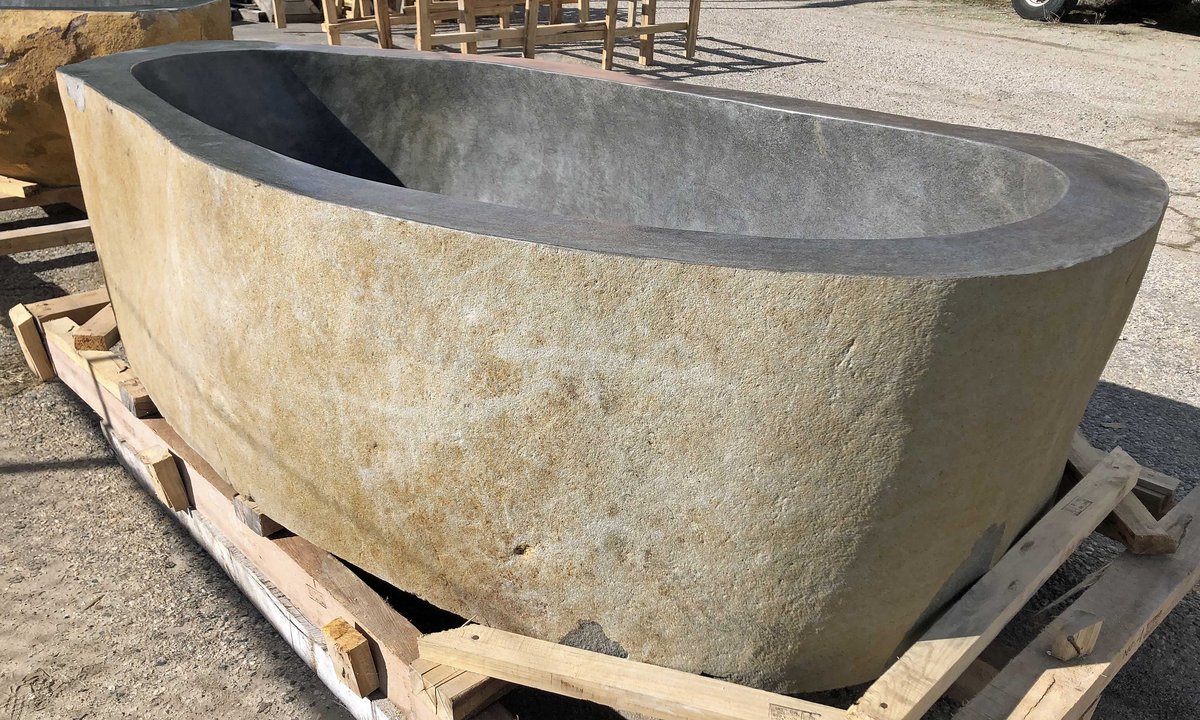



.png)
